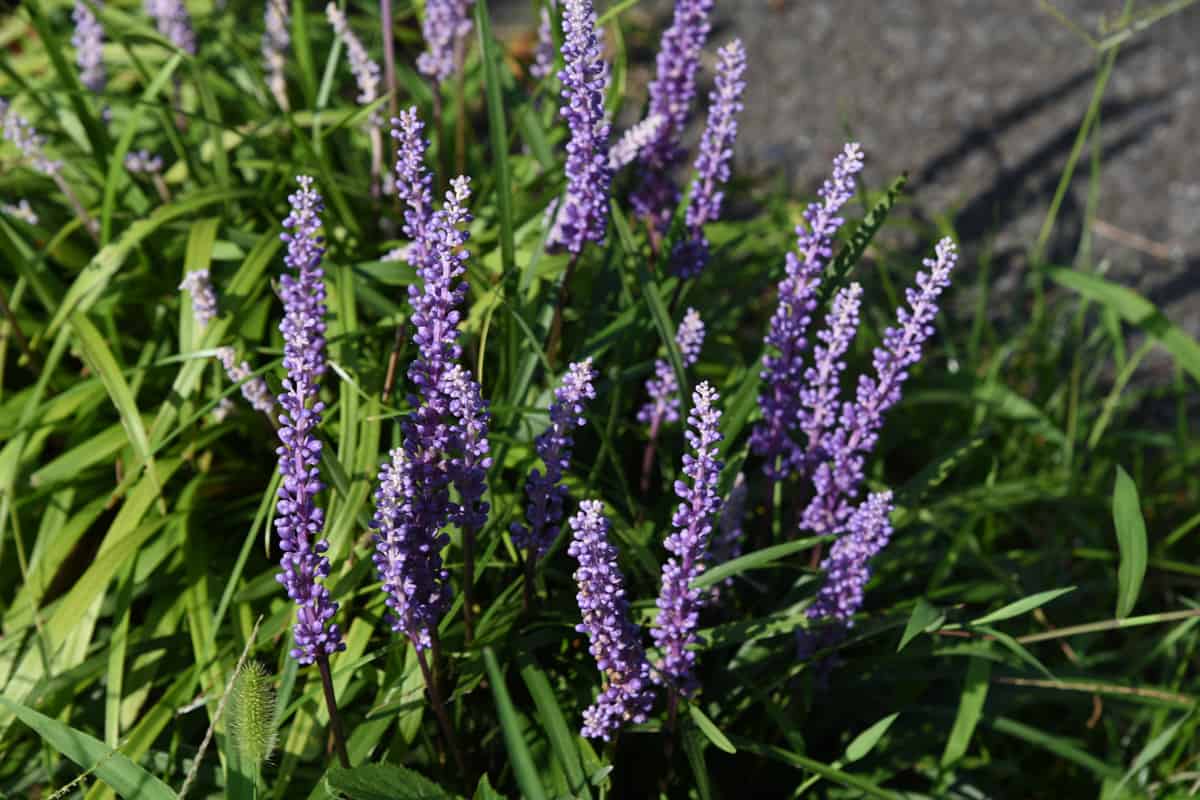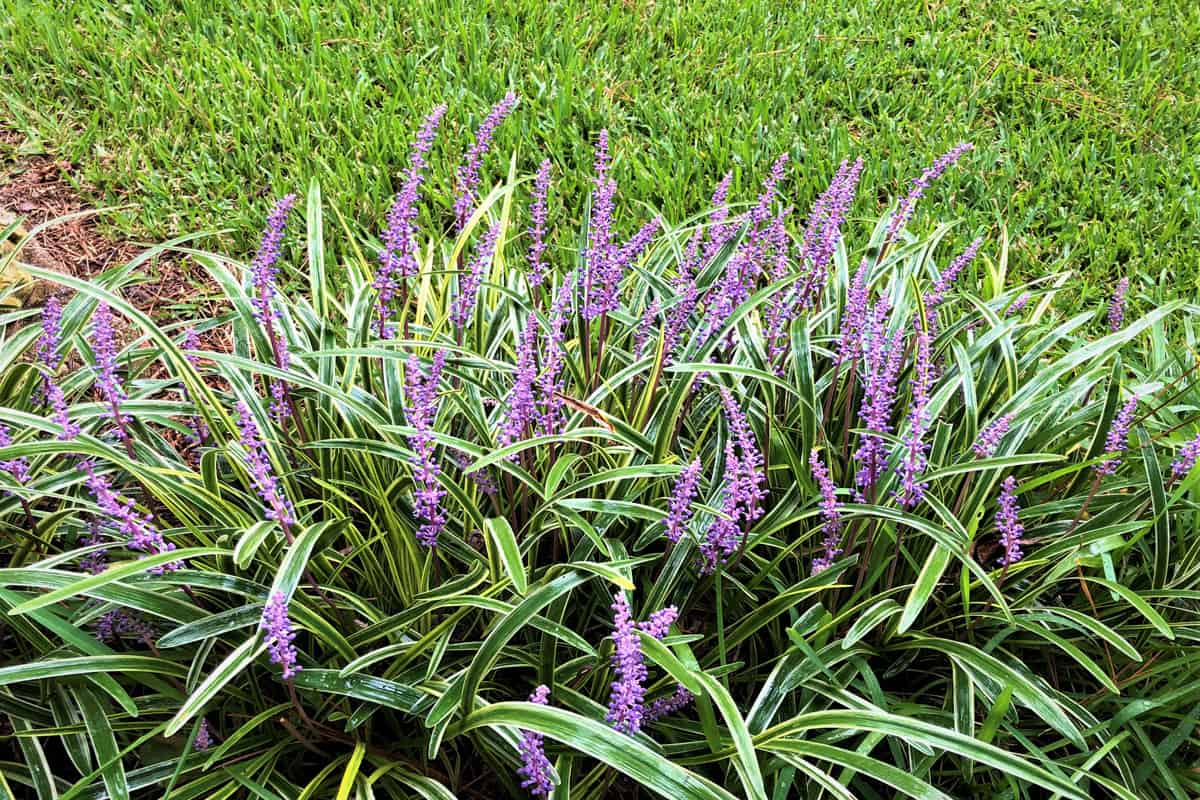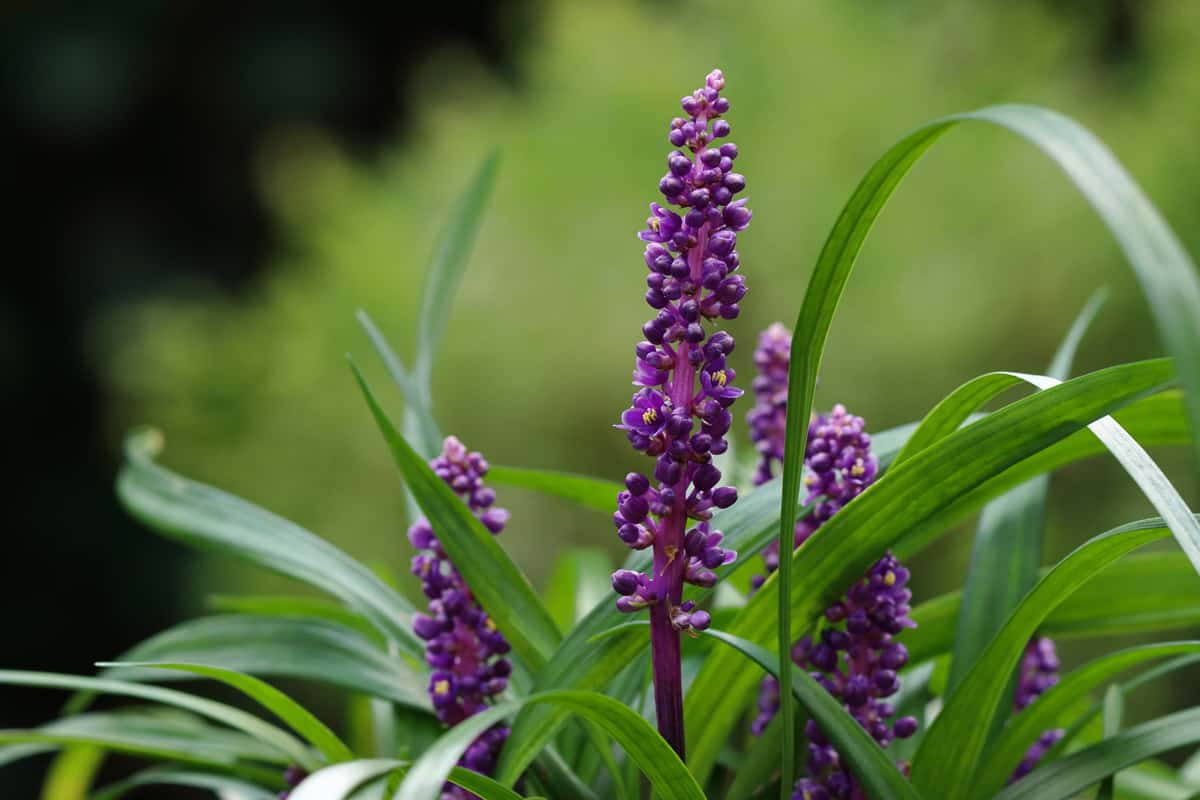Deciding on the perfect plant to grow in your landscape can sometimes be tricky. Do you want to try adding liriope into your garden but don't want to have to replant them each year? Are these gorgeous blue flowering plants annuals or perennials?
Well, we've done some research and have the answers for you!
Liriope is a grass-like perennial flowering plant that will come back each year. Generally, your liriope will grow in warmer climates throughout the four seasons, while colder regions will see their plant die back in the late fall/early winter.
An easy way to encourage better growth once spring comes is to cut back liriope, so that's something to add to your annual care routine.
As we start this post, we will cover all things growing liriope and discuss whether this species is perennial or annual. If you have liriope in your garden, need help with a new plant, or have additional questions, we're here to help. With that said, let's dive right into this topic below!
Is Liriope A Perennial Or Annual Plant?

Liriope will grow as a perennial plant species. This grass-like perennial is generally found in warm and cold climates, where it can grow for many years.
According to experts, if you plant liriope in a warmer climate, you can expect it to grow closer to an evergreen perennial. That essentially means your plant will stay colorful and healthy throughout the year.
In contrast, if you have liriope in a cooler growing zone, you can expect it to die back once the temperatures drop. Like the other perennials in your landscape, this could be in the late fall or early winter.
You may also know this species as 'lilyturf,' as it tends to grow as a popular groundcover throughout North America. Furthermore, some gardeners refer to liriope as 'monkey grass,' so it goes by various names.
Do Liriope Come Back Each Year?
Yes! Since this flowering species are perennial, you can expect your plant to return each spring. Liriope typically dies off in the fall if you live somewhere in colder weather.
Like any perennial in your landscape, liriope will start to slow down and eventually go into dormancy. However, once your liriope feels the ground become warmer, that's when it will begin growing again.
Unlike an annual species, liriope won't permanently die off once the temperatures reach freezing levels. That makes this ground cover a perfect option if you don't want to replant every spring.
Furthermore, a liriope should be easy to get ready for the wintertime, so you can't go wrong with having one! Remember, it's normal to see your liriope lose its leaves and turn brown once the winter arrives!
What Happens To Liriope In The Winter?

Though this species is usually evergreen, if the winter where you live is harsh (freezing temperatures), you will notice your liriope lose its color and go into a dormant stage.
One of the main reasons people confuse liriope for annuals is that they sometimes die off in the cold. As this happens, your plant is conserving its energy and waiting for the warm temperatures to ring in once spring arrives.
Many pros recommend "winterizing" your liriope, which means doing light pruning. Remember that before dormancy, your perennial will slow down its growth.
As this happens, your liriope prepares for the colder weather and needs as much energy as possible. Therefore, trimming your liriope back a bit can help prepare it for the cold and take some pressure off it.
Of course, you don't have to get wild, but try and prune back liriope in the later fall/early winter if you can.
Should I Cut Back Liriope In The Winter?
If you prefer to prune in the winter, that should be fine with liriope. However, many experts prefer to trim their liriope during the later fall, as it isn't fully dormant yet.
Sometimes, waiting until your liriope is entirely dormant to prune isn't helpful. According to the Burlington Times-News, cutting your plant within about 4 inches from the ground in the fall could be beneficial.
On top of that, some people choose to cut back their liriope throughout the year, depending on how quickly it grows. So, you don't need to wait to do mild pruning for winter, but you should hold off on major trimming until fall/winter.
Moreover, you might want to divide the liriope right as spring arrives, so you can see your plant multiply and fill more ground space within your garden.
What Happens If I Don't Cut Back Liriope Before Winter?
Suppose you don't want to cut back liriope before it becomes dormant. If you let your plant die back on its own, this shouldn't adversely affect your liriope.
Since this species is fairly hardy, you shouldn't have any issues if you don't prune it. Like many ground-covering plants, liriope don't mind fending for itself.
However, helping your plant conserve its energy can take the pressure off of it, which never hurts. Even for hardier species, like liriope, removing excess foliage can help them to grow back stronger and faster in the spring.
This is the case for most perennials, so if you have time to cut back your liriope, we think this is a good idea.
How Many Years Does Liriope Live?

You can generally expect liriope to return and grow for ten or so years. Of course, you can't always map out how long a plant will live due to various factors.
Specifically, liriope with high-quality soil, drainage, plenty of sunlight, and good air quality will outlive plants without these critical factors.
Furthermore, liriope is a ground cover for the most part, so it tends to spread over the years. It can be challenging to track which plant is the oldest, so you may not notice one die-off if you have many growing.
According to Clemson University, liriope is one of the more popular evergreen plants for landscaping as they don't require much attention and tend to spread independently.
On top of that, you can divide liriope in the springtime, creating new plants for your garden.
Again, this comes down to how well your liriope like their environment: so not everyone lives the same period.
How Fast Do Liriope Typically Grow?

One of the many benefits of growing liriope is how fast they grow. Most times, you can expect liriope to grow between 18 inches tall and 24 inches wide in one growing season, which is incredible.
In addition, liriope will respond well to fertilizer and is somewhat similar to grass in how quickly it can absorb those additional nutrients.
As we covered above, liriope is easy to manage and care for. Neglected plants can see major growth spurts if the weather is good, so sometimes you don't need to lift a finger.
That said, you can usually expect a liriope's final size to be around 10-18 inches tall. For width, you may see your plant become around the same size as its height or larger, depending on its environment.
The key to growing healthy, large liriope is giving your plant enough sun, water, and space to flourish. So the more room, the better!
Do Liriope Need Full Sun?

No. Even though this species responds well to partial sun exposure, you don't want liriope too exposed. In contrast, this ground-covering species prefers a part-shade location.
That said, liriope can also thrive in full sun, especially in cooler regions. The same goes for shade, as many liriope thrive in the deep shade if the weather stays warm throughout the year.
So this perennial evergreen seems to like a bit of everything and should grow perfectly fine in most situations. Liriope is a hardier option for your landscape, so if you aren't sure of the conditions: liriope will likely be alright.
According to experts, liriope may produce more flowers in a sunnier spot, so that is one thing to consider. If you want a yard full of blue-ish flowers, we recommend having liriope in the part-full sun.
Do Liriope Need Lots Of Water?
You want to give liriope plenty of water during their first growing season. However, once year one passes, your plant will become less dependent on you and doesn't need as much moisture.
According to Wilson Bros Gardens, your liriope should be drought-tolerant when established. So, as your plant ages and goes through the yearly growing seasons, it will do better in periods without water.
So, let's say you have an extremely dry summer season. If your liriope is past its first growing season/year, it should fare well in these less-than-ideal growing conditions.
However, drought can become a recipe for disaster if your plant is still relatively new. You want to try and keep the soil around your liriope consistently moist that first growing season, especially if you want your plant to come back bigger and healthier next year.
Just because liriope is tough doesn't mean you should purposefully neglect it.
To Wrap It All Up
Whether you have liriope in your garden or want to plant it, it's essential to know what type of plant it is. We found that liriope are perennials, often taking on an evergreen growth pattern in warmer climates.
In addition, your liriope may slow down its growth and become dormant as winter weather approaches. Before this colder period, we recommend cutting back your liriope to around four inches from the soil.
Of course, you don't always need to do any trimming, but if you expect your liriope to come back stronger and faster next spring versus one you leave to nature.
Made it to the end? Check out these helpful related garden articles below!
When To Cut Back And Divide Liriope [And How To Do That]
Monkey Grass Vs. Mondo Grass: Similarities And Differences
How To Divide And Store Iris Rhizomes [For Planting Next Season]?
